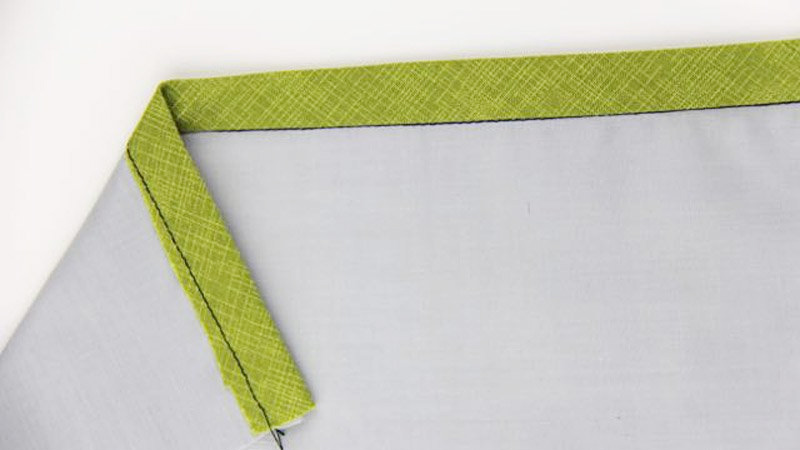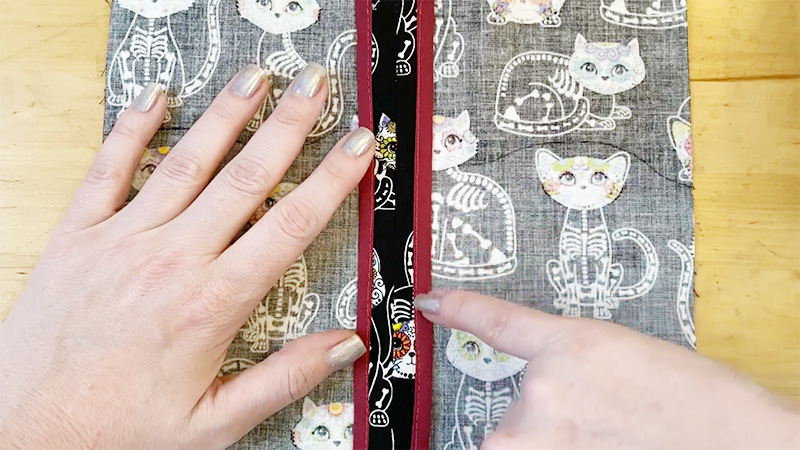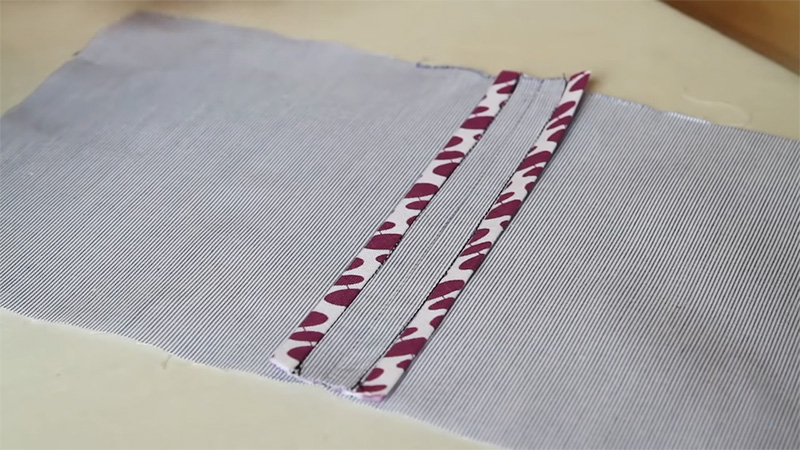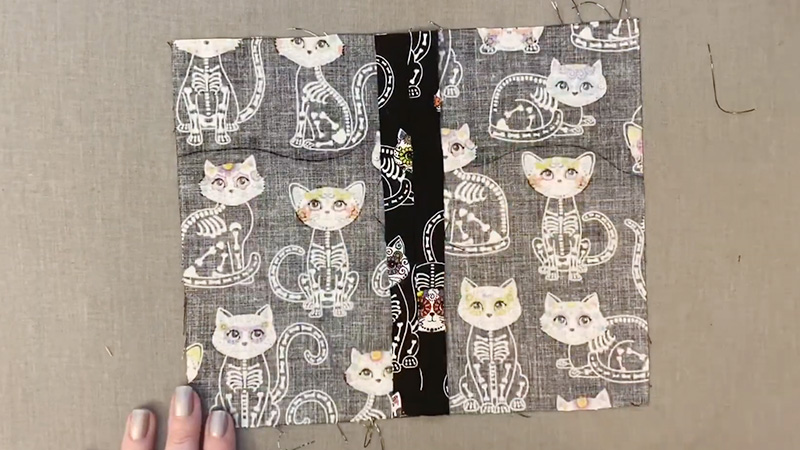The Hong Kong seam finish is a sewing technique that combines functionality and aesthetics to create beautifully finished seams with encased raw edges. This method adds a touch of professionalism to your garments while preventing fabric fraying.
Whether you’re a seasoned seamstress or a sewing enthusiast looking to enhance your skills, mastering the Hong Kong seam finish is a valuable addition to your repertoire.
In this comprehensive guide, we will delve into How to sew the Hong Kong seam finish, exploring various methods and providing step-by-step instructions. From selecting the right materials to mastering the stitching process, you’ll gain the knowledge and confidence to achieve impeccable seam finishes in your sewing projects.
Whether you’re working with lightweight fabrics, creating couture pieces, or simply aiming to elevate your sewing game, the Hong Kong seam finish offers a versatile and refined solution.

What Is A Hong Kong Seam In Sewing?
In sewing, a Hong Kong seam is a specialized seam finishing technique used to neatly encase raw fabric edges, particularly in lightweight and delicate fabrics. This technique involves the application of a narrow strip of bias tape or fabric, typically in a contrasting color, along the seam allowances.
The strip is meticulously stitched to both sides of the seam allowance, enclosing the raw edges and preventing fraying. Hong Kong seams not only serve a functional purpose by enhancing the durability of the seam but also add a decorative and professional touch to the garment’s interior.
This method is often used in unlined jackets, dresses, and other tailored garments, providing a clean and polished finish that is both visually appealing and structurally sound.
Hong Kong seams are versatile, allowing for creativity in choosing fabrics and colors to match or contrast with the main fabric, making them a popular choice for seam finishes in high-quality garments.
How To Sew The Hong Kong Seam Finish?

Here are the simple methods for sewing the Hong Kong seam finish:
Prepare Bias Binding
Begin by preparing bias binding strips. These strips are typically cut on the bias (a 45-degree angle to the fabric grain) to ensure flexibility and ease of application. The width of the strips can vary depending on your preference and fabric weight.
Press Seam Allowances Open
Sew your seam as usual and press the seam allowances open. This step is essential to create a flat surface for applying the bias binding evenly.
Attach Bias Binding to One Side
Align the raw edge of the bias binding with one of the seam allowances, right sides together. Stitch it in place close to the edge using a straight stitch. Be sure to backstitch at the beginning and end to secure it.
Fold and Press
Fold the bias binding over the seam allowance and the seamline, enclosing the raw edges. Press the binding in place. It should cover the seam allowance completely.
A stitch in Place
With the binding folded over the seam allowance, edgestitch along the folded edge of the bias binding. This stitching secures the binding in place and gives a clean, finished look.
Repeat on the Other Side
Repeat the same process on the other side of the seam, attaching bias binding, folding, and stitching in place. Ensure that the binding on both sides aligns neatly.
Trim Excess Binding
Finally, trim any excess bias binding and thread tails. Your Hong Kong seam finish is complete, providing a durable, clean, and visually appealing edge to your garment seams.
The Hong Kong seam finish adds a touch of professionalism to your sewing projects and is particularly useful for lightweight or delicate fabrics that tend to fray.
Experiment with different bias binding colors and fabrics to create unique and decorative seam finishes.
Supplies To Use For Sewing The Hong Kong Seam Finish

Here are the essential supplies for sewing the Hong Kong seam finish:
Fabric Seam Allowance
The primary material for sewing a Hong Kong seam finish is the fabric itself, which includes the seam allowances of the garment you’re working on.
These seam allowances are typically left unfinished and serve as the foundation for the Hong Kong seam finish.
Bias Binding or Fabric Strips
You’ll need bias binding or fabric strips, which are usually cut on the bias (45-degree angle to the fabric grain) to ensure flexibility. Bias binding can be made from the same fabric as your garment or from a contrasting fabric for a decorative effect.
The width of the bias binding can vary depending on your preference and the weight of your fabric.
Scissors or Rotary Cutter
Sharp fabric scissors or a rotary cutter with a cutting mat are essential for cutting bias binding or fabric strips accurately. Precise cutting ensures that the strips are even and uniform.
Pins or Clips
Pins or sewing clips are helpful for securing the bias binding or fabric strips in place before stitching. They prevent shifting and help maintain alignment as you sew.
Sewing Machine
A sewing machine with a straight-stitch function is essential for attaching and edge stitching the bias binding or fabric strips along the seam allowances. Make sure your machine is in good working order and has a compatible needle for your fabric type.
Iron and Ironing Board
An iron and ironing board is crucial for pressing open the seam allowances, folding the bias binding or fabric strips, and creating crisp, well-defined seams. Proper pressing ensures a polished finish.
Thread
High-quality thread in a color that complements your fabric is necessary for stitching the bias binding or fabric strips in place. A matching thread color ensures a neat and cohesive look for your Hong Kong seam finish.
By having these supplies on hand, you’ll be well-equipped to execute the Hong Kong seam finish with precision and professionalism, enhancing the durability and aesthetics of your sewing projects.
What Fabric Is Used For Hong Kong Finish?

While the Hong Kong finish is a versatile technique suitable for various fabrics, there are some common mistakes to avoid when choosing the fabric for this seam-finishing method:
Choosing Inappropriate Fabric Weigh
It’s essential to select bias binding or fabric strips that complement the weight and drape of your garment fabric. Heavy binding on lightweight fabric can create bulk and stiffness, while lightweight binding on heavy fabric may not provide the necessary reinforcement.
Neglecting Bias Cutting on Thin Fabrics
Thin fabrics, like chiffon or silk, require bias-cut binding or strips to maintain flexibility and prevent puckering or stretching along curved seams. Cutting on the straight grain can result in an unsightly finish.
Ignoring Color Coordination
While contrast can be appealing, a poor color choice can distract from the overall look of your garment. Ensure that the binding color complements or matches your fabric for a harmonious finish.
Not Pre-Washing Fabric
Failure to pre-wash your fabric and binding can lead to differential shrinkage, causing puckering or distortion after washing the finished garment. Always pre-wash and press your materials before sewing.
Overlooking Fabric Fray
Some fabrics are prone to fraying, making them less suitable for this seam finish. It’s crucial to select fabrics that fray moderately or choose an alternative seam finishing technique for highly fraying materials.
Neglecting Fabric Texture
Fabric texture can affect how smoothly the binding or strips lie against the garment. For textured fabrics, such as tweed or bouclé, opt for a finer or smoother bias binding to ensure a flush finish.
Using Inadequate Thread
Thread choice is crucial for seam durability. Using a thread that is too lightweight or fragile can result in premature seam failure, compromising the integrity of your Hong Kong finish.
By avoiding these fabric selection mistakes, you can ensure that your Hong Kong seam finish not only looks polished but also functions effectively in preserving the longevity of your garment.
FAQs
What is the Hong Kong seam finish, and when should I use it?
The Hong Kong seam finish is a sewing technique used to encase raw fabric edges within bias binding or fabric strips. It’s ideal for lightweight or delicate fabrics prone to fraying.
Use it when you want to create a clean, professional finish on seams, especially in unlined garments or those with visible interior seams.
How do I choose the right bias binding or fabric for the Hong Kong seam finish?
The binding or fabric strips should complement your garment fabric in weight, color, and texture. Opt for bias binding when working with curved seams. Ensure the fabric strips are cut on the bias for flexibility, especially on lightweight fabrics.
What type of stitch should I use for the Hong Kong seam finish?
A straight stitch is commonly used for attaching bias binding or fabric strips. For a polished look, use an edgestitch or stitch-in-the-ditch technique to secure the binding in place neatly.
Can I use contrasting colors for the bias binding or fabric strips?
Yes, contrasting colors can create a decorative effect. Consider your garment’s design and personal preferences when choosing colors. Match or contrast—both options can add visual interest to your seams.
How do I maintain the Hong Kong seam finish over time?
To maintain the finish, avoid excessive friction and harsh washing. Launder your garments according to care instructions, and consider reinforcing any loose stitches or fraying binding if needed after washing. Proper care will help preserve the integrity and appearance of your Hong Kong seam finishes.
Conclusion
As we conclude our exploration of sewing the Hong Kong seam finish, it becomes evident that this technique is more than just a seam treatment it’s a gateway to elevating the quality and appearance of your garments.
The fusion of functionality and aesthetics makes the Hong Kong seam finish a sought-after skill in the world of sewing and fashion. By encasing raw edges with bias binding or fabric strips, you not only prevent fraying but also create a polished interior that matches the garment’s overall craftsmanship.
With the knowledge and practice gained from this guide, you can confidently apply the Hong Kong seam finish to your sewing projects, adding a professional touch and ensuring your garments stand the test of time.
Whether you’re working on everyday wear, special occasion attire, or custom creations, the Hong Kong seam finish will become a valuable tool in your sewing toolkit, enhancing the quality and longevity of your handmade garments.
Leave a Reply